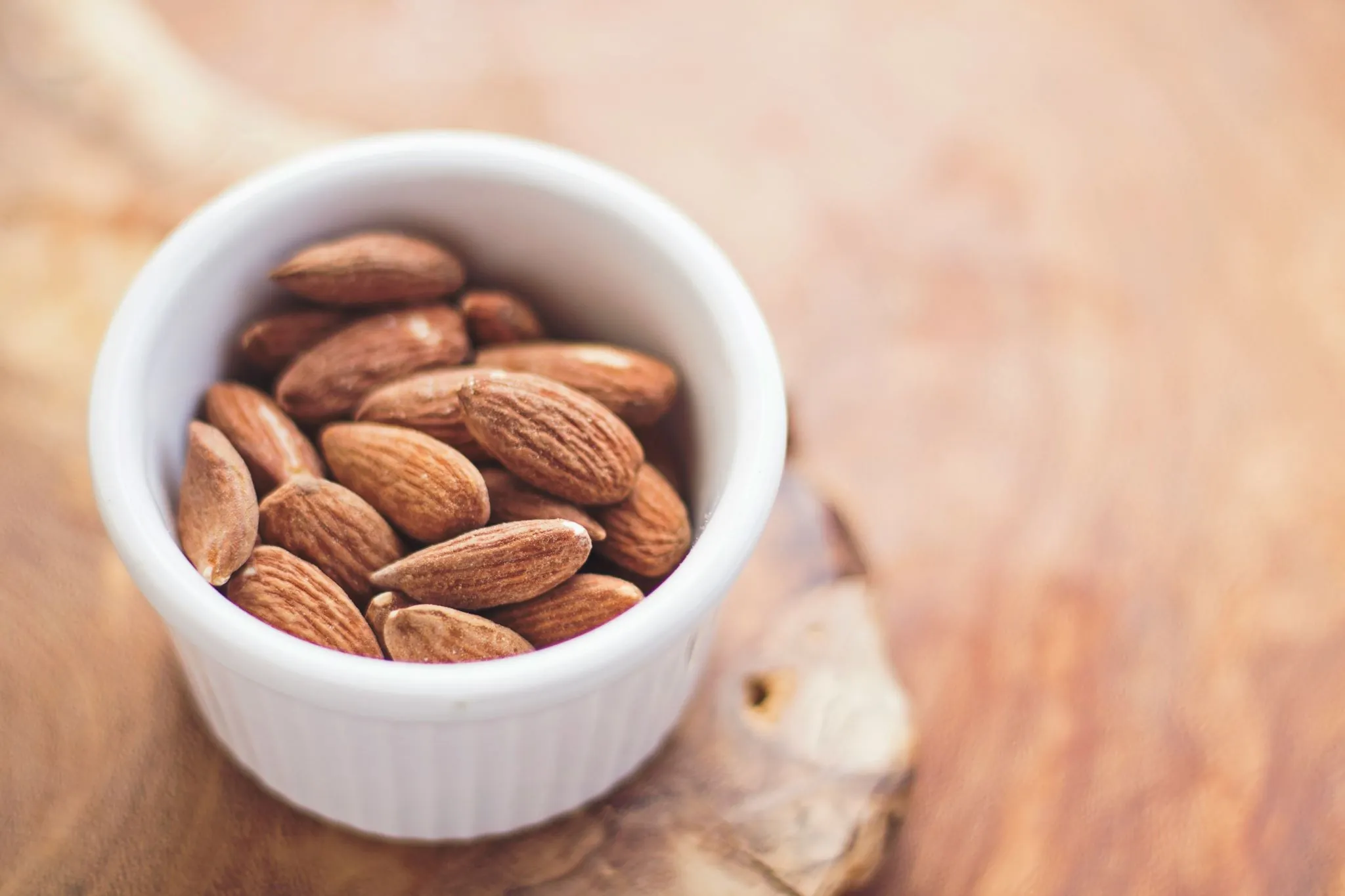The Benefits of Nuts and Seeds for Babies and Toddlers
Reading time: 7 min
Reading time: 7 min

By: Jessica D’Argenio Waller, MS, CNS, LDN
If your little one has recently started solids, you may be wondering when (or if?) you should start feeding them nuts and seeds. Because nuts are one of the primary food allergens, this is a common concern. But the latest research shows that introducing nuts and seeds early on can actually prevent potential allergic reactions down the line, which means that, in most cases, if there’s no family history of allergies, you can start with baby-safe forms when your bub is ready for solids, around 6 months. (With a history of peanut allergy, reach out to your child’s pediatrician for guidance – they may suggest you start even earlier.) Aside from that, nuts and seeds are nutritional powerhouses, packed with fiber, protein and plant-based fats, all of which your baby needs to thrive in this time of rapid growth and development. We’ll dive into how to introduce nuts and seeds into your baby’s diet—and the benefits of doing so.
Nutrition plays a crucial role in supporting a baby’s rapid growth and development during the first year of life. As babies progress from newborns to active, curious 1-year-olds, their nutritional needs evolve significantly.
From birth through 6 months of age, breast milk and/or formula provide a perfect balance of nutrients for babies’ needs. These include easily digestible proteins, fats essential for brain development, and carbohydrates for energy. Breast milk and formula also contain a slew of vitamins and minerals crucial for your little one’s health and development.
Around 6 months, your baby’s nutritional requirements begin to change. Their rapid growth and increasing activity levels demand more energy and nutrients than milk alone can provide. This is when solid foods are typically introduced, complementing – but not replacing! – breast milk or formula.
Between 6 and 8 months, babies need more iron, zinc and protein to support their developing bodies and brains. Their energy requirements increase, and they begin to need more diverse nutrient sources. This is an ideal time to introduce whole grains, legumes and iron-rich foods such as iron-fortified cereals, pureed meats and iron-rich vegetables.
From 8 to 12 months, your baby’s nutritional needs continue to expand. They’ll require more calories, protein, and a wider variety of vitamins and minerals to support their growing bodies and increase mobility. During this stage, a baby’s diet should include a broader range of foods, including:
It’s during this 8 to 12 month period that carefully introduced nuts and seeds can play a big role. As excellent sources of healthy fats, protein, fiber and various micronutrients, nuts and seeds can help cover increased nutrient needs. However, they must be introduced in safe forms (like smooth, unsalted and sugar-free nut butters or powders mixed with breast milk or formula) to avoid choking hazards.
By 12 months, a baby’s diet should be quite varied, providing a wide range of nutrients to support their rapid growth and development. While breast milk or formula still plays a role, it now makes up a smaller portion of their total nutritional intake.
Nuts offer a good source of plant-based fats, which are vital to your little one’s healthy development. Fats are essential for:
Many nuts are rich sources of trace minerals that are hard to find elsewhere in foods, in addition to being a good source of fat, protein and fiber.
Remember, though, that nuts in their natural state are choking hazards for babies, who are still learning to effectively push food around their mouths. We’ll talk more about safe ways to introduce nuts and seeds below.
For babies, it’s generally recommended to use raw seeds, finely ground (or in powder form) and mixed into breast milk or formula or sprinkled on another substance, like yogurt. Or as smooth seed butter mixed with warm water to avoid choking. Roasted seeds may be introduced later, once your bub has strong teeth for chewing, usually around 18 months to 2 years of age, and always under supervision.
Offering your baby nuts and seeds can be a little nerve-wracking, but it’s important. In most cases, you’ll want to introduce nuts and seeds into your baby’s diet soon after they start solids, though there are special guidelines for peanuts in particular. Your pediatrician can offer unique advice on how to introduce nuts to your baby, especially if you have a family history of nut or seed allergy, or your infant has eczema (a skin condition that can coincide with food allergy), but here are the general guidelines.
Your pediatrician can help determine if your baby falls into one of the three groups below:
For children in group 1, testing for peanut allergy is recommended – and speak with your child’s doctor between 2 and 4 months of age about how and when to give peanut products. If an allergy shows up in testing, they may recommend you test with a peanut product in the doctor’s office.
For children in group 2, no testing is needed, though your doctor still may recommend trying peanut products early, at 6 months of age.
For children in group 3, it’s generally recommended that they have peanut products along with other foods based on their family’s preferences and cultural practices. It’s not as important to do it early, but it’s fine if parents do, AAP states.
To introduce peanuts or tree nuts safely (cashews, walnuts, almonds, hazelnuts and others), as well as sesame seeds, which is another common allergy, follow the steps outlined below, being sure to space out different types of nuts/seeds over a couple of days, and watch for symptoms of an allergic reaction.
Prepare a nut-butter puree
Remember: Nuts in their natural form can be choking hazards for infants (even if chopped). Instead, try mixing a smooth-style nut butter that’s salt-free and sugar-free (or seed butter, like sunflower or tahini) with warm water, formula or breast milk to make a puree consistency for your child to try. Keep portions small at this stage – just a ¼ teaspoon.
Introduce gradually
You can mix a small amount of the nut/seed puree into another type of food, such as apple puree, or spread it on a cracker or banana. You can also try rubbing a small amount inside your baby’s lip.
Observe your baby
Wait 15 to 20 minutes after giving your baby the nut or seed to watch for an allergic reaction, such as swelling, hives, itching, or discoloration around the mouth. If there’s no reaction, you can gradually increase the amount of nuts and seeds you give your baby.
Introduce each nut separately
Different nuts and seeds have different proteins, so your baby might be allergic to one type but not another. Try to wait at least 2 to 3 days between introducing each type of nut.
The following signs and symptoms tend to appear within minutes or up to a few hours after feeding.
If you suspect an allergic reaction, especially respiratory or anaphylactic symptoms, stop feeding and seek medical attention immediately.
While nuts and seeds offer numerous nutritional benefits, it’s important to note that they should be introduced carefully and in age-appropriate forms to ensure safety.
Main meals should provide the bulk of a baby’s nutritional needs, while snacks serve as important supplements – and nuts and seeds have a place in both. Here’s how to distinguish between meals and snacks, plus smart serving sizes for each.
Meals:
Example meal: Mashed sweet potato with tahini drizzle, small pieces of soft-cooked chicken, and steamed broccoli florets
Snacks:
Example snack: Sliced banana with a thin spread of almond butter
Snacks can provide additional nutrients, help maintain energy levels between meals, and offer opportunities to try self-feeding while introducing new foods in a low-pressure setting.
Incorporating nuts into a baby’s diet can be done safely and creatively. Here are some easy ways to introduce nuts:
It’s perfectly normal to feel a little nervous about introducing nuts and seeds to your baby. But remember: early introduction can prevent more severe allergies as your little love gets older. By starting slowly and watching carefully for signs of an allergy, you can take this important step with confidence. And feeding your baby a diverse diet that includes nuts and seeds means you’re helping them get added protein and plant-based fats, plus vitamins and minerals, all of which are crucial during this period of fast growth. Trust that offering a diverse diet during this window of food exploration (from about 6 months to 18 months) sets the stage for healthy eating habits down the line. You’re doing great!

Let’s Make It Official
Get the latest news on parenting tips, food play hacks, promotions and giveaways!
Subscribe Now